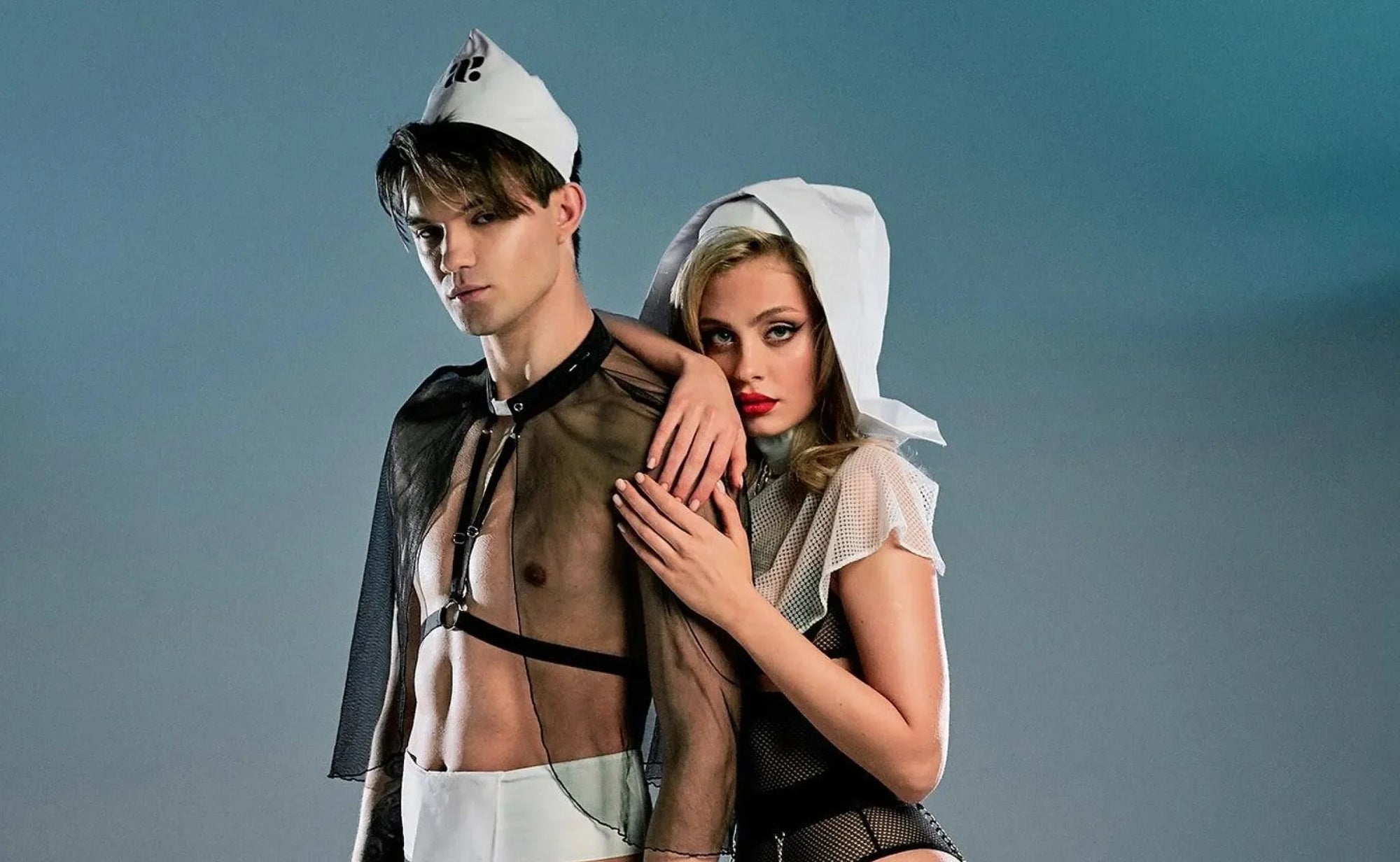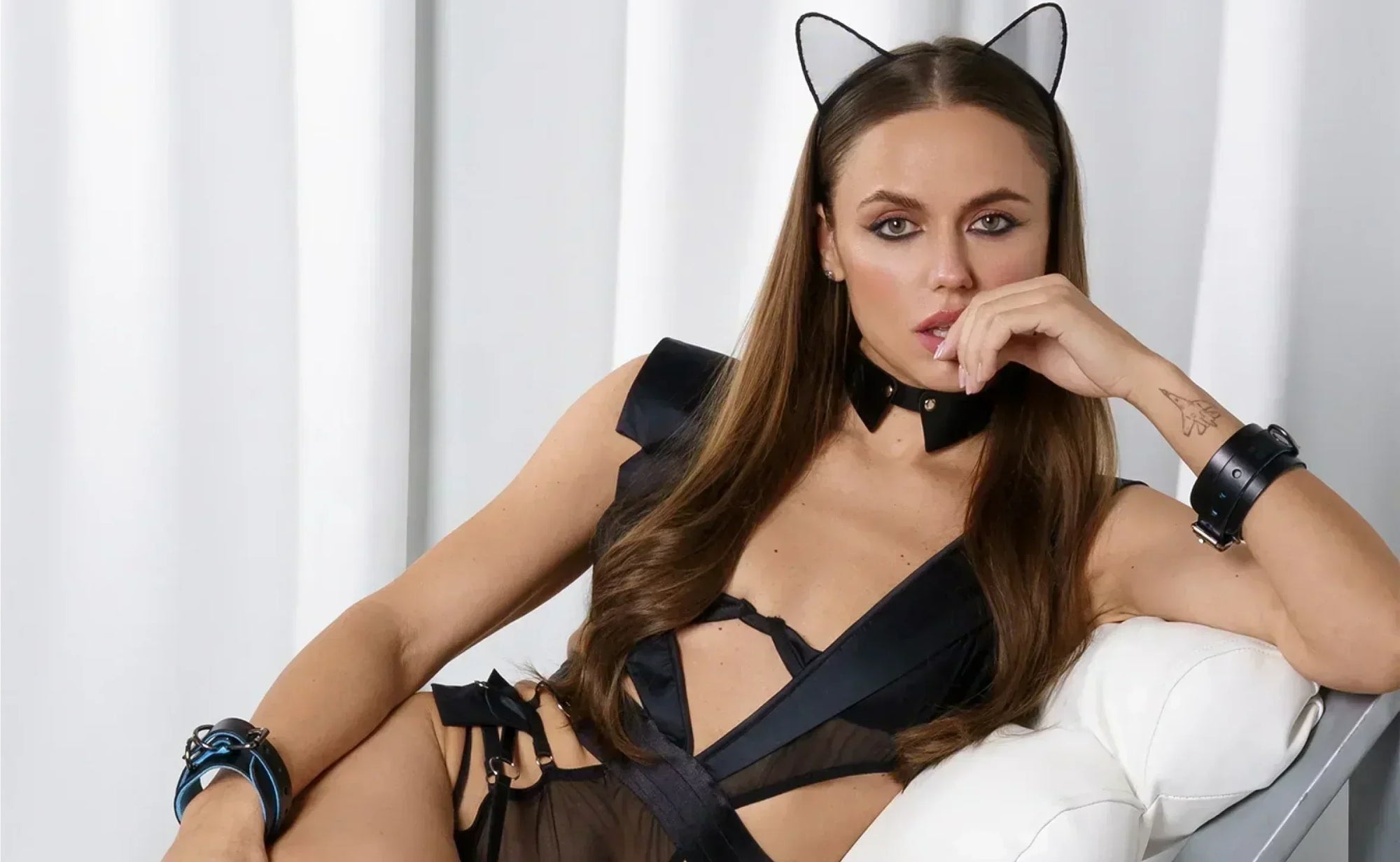Unveiling the Intimate Tapestry of Desire
Lingerie, with its delicate fabrics and intricate designs, has been a silent narrator of human sensuality throughout the ages. Yet, within the vast realm of undergarment, there exists a subset that transcends the ordinary, weaving a tale of desire and allure. Join us on a journey through time as we explore the captivating history and evolution of erotic lingerie, an intimate tapestry that reflects the ever-changing landscapes of culture, fashion, and societal perceptions of sensuality. From modest beginnings to the provocative designs of today, each thread in this narrative unveils a story of passion, liberation, and the timeless pursuit of intimate connection. Welcome to the fascinating exploring of the world where fabric meets fantasy, and desire is woven into every stitch.

The History and Evolution of Erotic Lingerie
Lingerie, an intimate garment that has transcended mere practicality to become a canvas for seduction, has a fascinating history deeply interwoven with the ebb and flow of societal norms and desires. In ancient civilizations, where function often eclipsed form, lightweight fabrics hinted at an underlying sensuality. The Renaissance era introduced corsets, shaping not just the silhouette but also the perception of beauty. As we moved into the liberating spirit of the 1920s, lingerie became playful, reflecting the changing role of women in society.

The mid-20th century brought forth pin-up allure, emphasizing curves and femininity. The sexual revolution of the 1960s and '70s saw lingerie reflecting a newfound openness toward pleasure. Fast forward to the present day, and erotic lingerie has evolved into a dynamic blend of classic elements and contemporary designs, embracing diversity and celebrating individual expression. From its modest origins to today's diverse and inclusive offerings, the history of erotic lingerie is a captivating journey through changing societal attitudes and the timeless pursuit of allure.
Ancient Roots of Seductive Attire
The allure of seductive attire finds its roots in the ancient civilizations that understood the power of adornment and the impact it could have on desire and perception. In ancient Egypt, women draped themselves in fine linens and diaphanous fabrics, creating an aesthetic that spoke of grace and sensuality. The intricate beadwork and jewelry not only showcased craftsmanship but also accentuated the beauty of the female form, setting a precedent for the intimate connection between attire and allure.Moving westward to ancient Greece, the concept of seduction through attire took a more explicit turn. The flowing chitons and peplos worn by Grecian women were designed to enhance their natural beauty, with fabrics often chosen to caress the skin delicately. The art of seduction was embedded in the very essence of these garments, acknowledging the intimate connection between what is worn and the emotions it could evoke. These ancient civilizations laid the groundwork for the timeless dance between seduction and attire that continues to captivate us today.

Unveiling Renaissance and Rococo Elegance
The Renaissance era, spanning from the 14th to the 17th century, brought forth a profound transformation in art, culture, and, notably, in fashion. This period witnessed the emergence of garments that not only adorned the body but also spoke volumes about social status and personal aesthetics. One of the most iconic elements of Renaissance fashion was the corset. Initially designed for practical purposes such as support and posture, the corset evolved into an instrument of seduction, reshaping the female silhouette into an hourglass figure that became synonymous with beauty and allure.

As we transitioned into the Rococo period, spanning the late 17th to the late 18th century, the elegance of lingerie became more intricate and luxurious. Women of the aristocracy embraced sumptuous fabrics, delicate lace, and embellishments that elevated undergarments to pieces of art. The corset, though still prevalent, became more ornate, adorned with ribbons, bows, and exquisite embroidery. This era marked a fusion of functionality and aesthetic appeal, setting the stage for lingerie to be not only a practical underpinning but a symbol of refinement and sensuality.The Renaissance and Rococo periods were pivotal in shaping the perception of seductive attire. From the structural elegance of the corset to the opulent designs of Rococo lingerie, these eras laid the foundation for the intimate garments that continue to captivate and inspire today.
Victorian Constraints and Liberation
The Victorian era, spanning much of the 19th century, brought with it a paradoxical approach to women's attire. While the fashion of the time was characterized by modesty and restraint, it also paradoxically saw the rise of more intricate and elaborate lingerie. Corsets tightened further, emphasizing the coveted hourglass figure and reinforcing societal expectations of modesty and virtue. Layers of petticoats and voluminous skirts added to the complexity of undergarments, creating a silhouette that adhered to Victorian ideals of femininity.
Despite the constraints imposed by Victorian fashion, there were subtle signs of liberation in lingerie design. The later years of the era witnessed the introduction of the bustle, a structure that accentuated the posterior and allowed for a certain degree of freedom in movement. Additionally, innovations in fabric and lace production allowed for more delicate and refined lingerie, introducing an element of sensuality beneath the layers of modest clothing. The tension between constraint and subtle liberation in Victorian lingerie set the stage for the more overt expressions of sensuality in the years to come.As the Victorian era gave way to the Edwardian period, the first signs of liberation from the strict constraints of the corseted silhouette emerged. These early glimpses of freedom laid the groundwork for the dramatic shifts in lingerie design that would characterize the early 20th century.

The Roaring Twenties and Flapper Rebellion

The 1920s, often referred to as the Roaring Twenties, marked a seismic shift in societal norms and cultural attitudes, and nowhere was this more evident than in the realm of fashion. The aftermath of World War I brought a desire for liberation and a rejection of the previous generation's constraints. The flapper, an emblem of this rebellion, became the epitome of the new, bold woman. Lingerie, too, underwent a transformation as it shed the layers and constraints of previous eras.
Gone were the corsets that defined the silhouette of the previous decades. Instead, the 1920s saw the rise of a more androgynous look, with flattened chests and a focus on freedom of movement. Lingerie became simpler, with lightweight chemises and tap pants that reflected the newfound independence of women. Delicate lace and silk adorned these garments, offering a subtle sensuality beneath the iconic flapper dresses.
The rebellion of the Roaring Twenties wasn't just a fashion statement; it was a societal shift that embraced the spirit of liberation and challenged traditional norms. Lingerie, as an expression of personal freedom, mirrored the bold and carefree attitude of the flapper, setting the stage for a new era of intimate apparel.
Mid-Century Sensuality
The mid-20th century witnessed a resurgence of femininity and glamour in lingerie design. Post-World War II, society experienced a desire to return to more traditional gender roles, and this shift was reflected in the fashion of the time. The hourglass silhouette, characterized by a nipped-in waist and accentuated curves, once again became the epitome of beauty. Lingerie, during this period, played a pivotal role in shaping and enhancing the female form.

The iconic pin-up aesthetic emerged, heavily influencing lingerie design. High-waisted panties, bullet bras, and garter belts and tracing harnesses adorned with silk stockings became the symbols of unapologetic femininity. Pin-up girls, with their alluring poses and glamorous lingerie, permeated popular culture, shaping not only fashion but also the collective imagination. Sensuality was both celebrated and stylized, creating an era-defining image of intimate allure.
This mid-century sensuality in lingerie not only reflected the societal ideals of the time but also set the stage for the sexual revolution of the 1960s. The pin-up era laid the groundwork for a more liberated approach to sexuality and intimate expression, leaving an indelible mark on the evolution of lingerie design.
The Sexual Revolution and Beyond
The 1960s brought about a seismic cultural shift known as the Sexual Revolution, challenging traditional norms and ushering in an era of sexual liberation. Lingerie became a symbol of this newfound freedom, embracing bold designs and provocative styles. The restrictive corsets of the past were discarded in favor of unstructured, sheer, and daring lingerie that celebrated the natural form.

As societal attitudes toward sex and relationships evolved, lingerie followed suit. The bra-burning feminist movement of the late 1960s and early 1970s questioned the traditional roles assigned to women, influencing lingerie design to become more inclusive and comfortable. The concept of lingerie as a tool for self-expression gained prominence, and diverse styles catering to different tastes and body types emerged.
In the latter part of the 20th century and into the 21st century, lingerie has continued to evolve, reflecting changing notions of beauty, body positivity, and individuality. From the minimalist styles of the 1990s to the body-positive movements of recent years, lingerie has become a canvas for self-expression, empowering individuals to embrace their unique sensuality. The journey from corsets to contemporary lingerie is not just a tale of changing fashion; it's a reflection of the ever-shifting landscape of societal attitudes toward intimacy, individuality, and personal expression.
The chronicle of lingerie is a captivating journey through the annals of history, revealing not just changing fashion trends but the shifting sands of societal attitudes towards intimacy, femininity, and self-expression. From the corsets of the Renaissance to the rebellious flapper styles of the Roaring Twenties, and the liberating designs of the Sexual Revolution, each era's lingerie unravel and tells a story and secret of the historical prevailing ideals and desires of its time.


